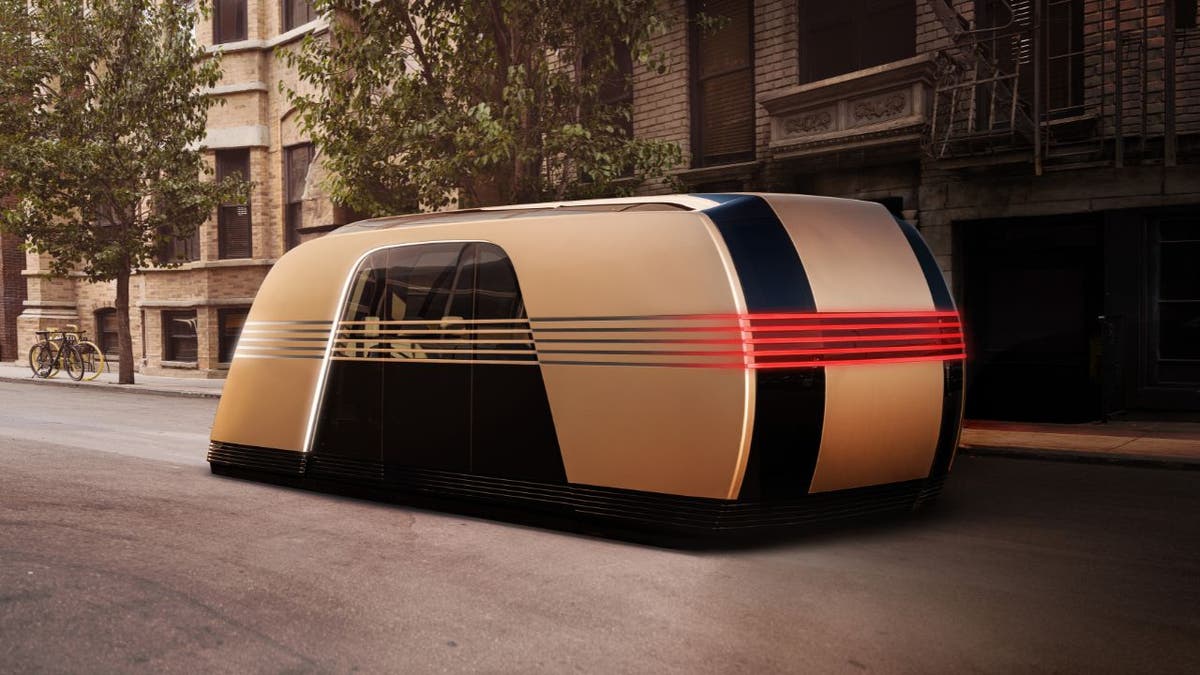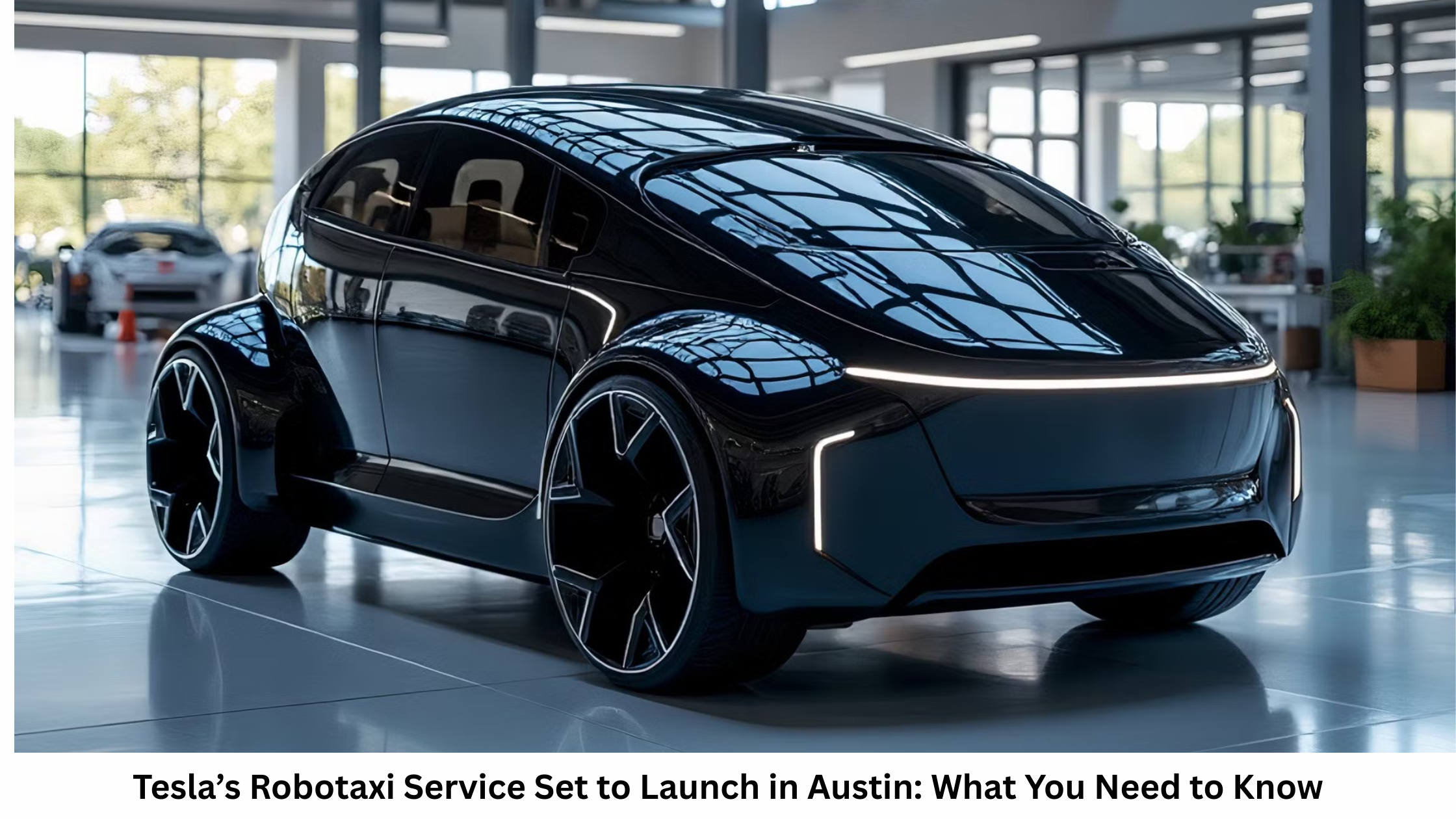Tesla is stepping closer to a self-driving future with its new robotaxi service launching on June 12, 2025, in Austin, Texas. The service will initially use a small fleet of driverless Model Y vehicles, operating in a limited area and starting with Tesla employees only. Here’s everything you need to know about this major move toward autonomous transport.
Tesla’s Robotaxi : Big Step Toward Full Autonomy

Tesla has long promised a world without drivers. Now, its first real test begins in Austin. While rivals like Waymo and Cruise use specially made cars with complex sensors like LiDAR and radar, Tesla’s approach is different. The company is sticking with its Full Self-Driving (FSD) software and Tesla Vision, a camera-only system. It’s simpler, cheaper, and entirely camera-based—no extra sensors.
Internal Rollout Begins June 12 : Tesla’s Robotaxi

The launch will be private at first. Tesla employees will be the first users, helping the company spot bugs and improve performance before letting the public in—likely by late June or early July. Elon Musk says the company is ahead of schedule, signaling strong internal confidence.
What’s Inside the Tesla’s Robotaxi ?

Here’s what makes Tesla’s robotaxi special:
| Feature | Details |
| Model | Modified Tesla Model Y |
| Software | Tesla’s Full Self-Driving (FSD) |
| Sensors | Tesla Vision (cameras only, no radar or LiDAR) |
| Driver Presence | No front-seat driver; engineer may ride in the passenger seat |
| Service Area | Limited, geo-fenced zones within Austin |
| Teleoperation | Remote human support available in tricky situations |
| Safety Testing | Over 1,500 rides completed before launch |
| App Support | Tesla ride-hailing app handles ride bookings and dispatch |
| Environment | Fully electric, zero-emission vehicles |
| Future Vehicle | Cybercab—coming next with no steering wheel or pedals |
Comparison with Waymo

| Feature | Tesla Robotaxi | Waymo Robotaxi |
| Sensor Tech | Cameras only (Tesla Vision) | LiDAR + Radar + Cameras |
| Vehicle Type | Modified Model Y | Custom-built minivans |
| Testing Timeframe | Few days without a driver | 6+ months without a driver |
| Remote Support | Available | Available only in rare situations |
Waymo has been testing longer, but Tesla is moving faster—raising both excitement and concern.
Public Safety and Government Oversight

The National Highway Traffic Safety Administration (NHTSA) is watching closely. They are assessing:
- How Tesla measures the safety of its self-driving system
- Whether the system can handle real-world situations
- The use of teleoperators to help when needed
Each vehicle is expected to have a remote operator during the initial phase, which raises the question: Is it truly autonomous?
The Role of Teleoperation

Teleoperators provide a hidden layer of human backup. Their tasks include:
- Taking over during emergencies
- Navigating complex traffic
- Ensuring passenger comfort
Tesla may not advertise it loudly, but human help is still part of the system, at least for now.
Looking Ahead: The Cybercab

Tesla’s long-term goal is the Cybercab—a car designed only for ride-hailing. Key features include:
- No steering wheel or pedals
- AI-only control
- Full passenger comfort
- 100% electric, futuristic interior
The Model Y is just the beginning. Cybercabs are expected to roll out by 2026.
First Factory-Delivered Driverless Car?

Musk has hinted that by July 2025, Tesla may deliver the first truly autonomous car straight from the factory. If successful, it will be a world first and a huge leap for the automotive industry.
Why Austin is the Chosen Testbed
Austin is home to Tesla’s Gigafactory and offers:
- Supportive tech policies
- A vibrant innovation culture
- Diverse traffic conditions for real-world testing
If things go well in Austin, Tesla plans to expand to:
- San Francisco
- Los Angeles
- Miami
- New York
Obstacles Tesla Must Overcome
Despite the buzz, challenges remain:
- Public trust is still low for self-driving tech
- Government regulations may get stricter
- Real-world driving has unpredictable situations
- Strong competition from Waymo, Zoox, and Cruise
These factors could delay or change Tesla’s rollout plans.
Final Thoughts
Tesla’s robotaxi launch in Austin on June 12, 2025, marks a bold move into autonomous transportation. Using modified Model Y vehicles, Tesla is starting small but thinking big. With Elon Musk pushing forward, this could be a turning point for self-driving cars. However, safety, regulation, and public trust will ultimately decide how far and how fast Tesla can go.
FAQs
- When is the Tesla robotaxi launch?
June 12, 2025, starting with employees in Austin. - What vehicles are used?
Modified Tesla Model Ys with Full Self-Driving software. - Is it open to the public?
Not yet. Public access is expected by late June or early July 2025. - Will there be a driver inside?
No driver in the front seat. A Tesla engineer may ride as a passenger during testing. - What’s different from Waymo’s robotaxis?
Tesla uses cameras only (no LiDAR), whereas Waymo uses a full sensor suite and custom vehicles.
Join us for Free prediction and More information about cricket join us on our Telegram channel
Puneet Superstar (Prakash Kumar) Biography, Age, Career, Bigg Boss, Net Worth & More
